San Francisco “is daffy on baseball,” the Chronicle announced on April 28, 1912. The town teemed with ball teams – not pros but squads representing neighborhoods, businesses, stores, schools and more. On that spring Sunday, the paper reported, “just 30 games were played at Golden Gate Park…The big Rec at Golden Gate Park was one large panorama of men and boys playing ball.”
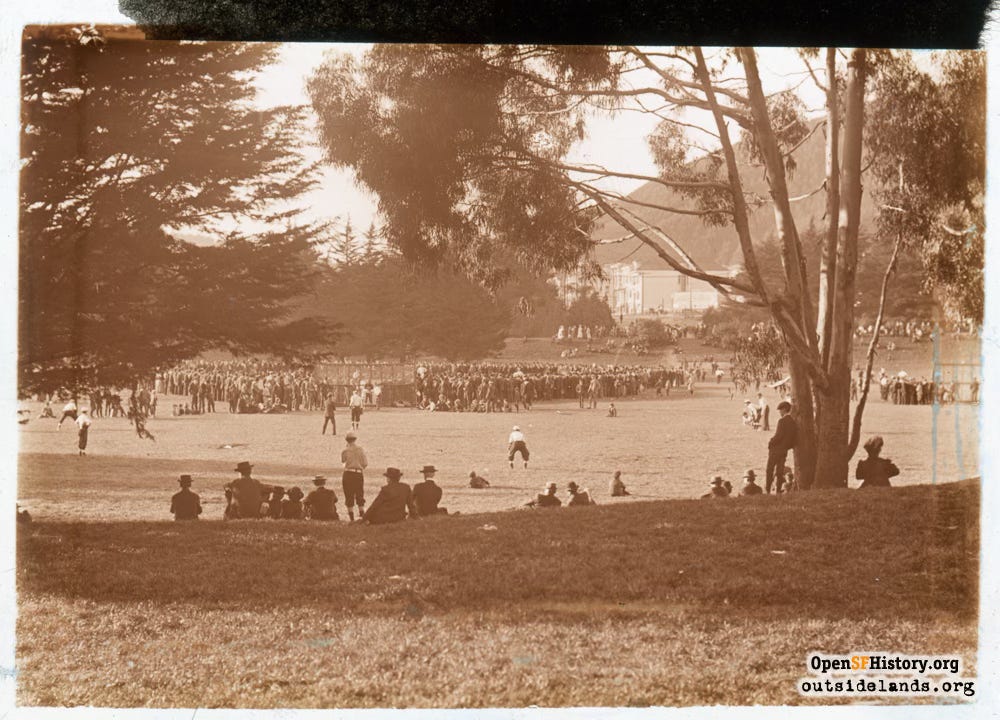
That’s not a common sight any more. The panorama of play in the park has changed and diversified with more action in the soccer fields, the disc golf course, the tennis and pickleball courts, and pop-up volleyball courts than the baseball diamonds.
But, I got a glimpse of those baseball-daffy days a few Sundays ago, when I went to Big Rec to watch a game between teams from the Bay Area Vintage Base Ball League. Like sports versions of Civil War reenactors, they wear authentic uniforms and steep themselves in nineteenth customs and language. “Capital” or “good ginger!” someone might call out after a good play. They’re teleporting back to what they say is a purer form of the game, “the way it was before $100M contracts, shoe sponsorships, and 25-man rosters,” as the league’s handbook puts it.
“Somebody once described what we do as nerd-jock cosplay,” explained Scott “Clover” Rowe, a player on the San Francisco Pelicans.
The league, now in its 20th year, has 10 teams. I watched the Barbary Coasters square off against the Dublin Aces. The Aces definitely had the edge fashion-wise with their all-black uniform and bumblebee striped socks. But the Coasters had the advantage fan-wise, with an exceptionally energetic if small cheering section of “cranks”, who celebrated every hit and run earned by cranking noisemakers and yelling “huzzah.” (They also had a special song for their team – check out the video of it below.)
Terry “Scribe” Forte, the league press secretary, who was watching the game, was happy to tell me all about the legue and the world of vintage base ball. (Note it’s two words, not one as in modern usage,) There are several hundred vintage base ball clubs in the country, each one playing by the rules of its chosen era. “Most leagues around the country play 1860s or 1870s rules,” he explained.
Terry Stubbs, a spectator who played on vintage teams in Colorado, chimed in. “We played 1860s rules,” which meant they wore no gloves and the pitches were underhand.
The founders of the Bay area league opted to follow the 1886 rule book. They chose that era because it was when the sport began to look like modern baseball, with the introduction of overhand pitching and other changes, such as elimination of the rule that a ball caught on a bounce is an out.
Still there are differences. It takes seven balls to get a walk, a foul ball doesn’t count as a strike and the games last only seven innings. The players don’t have numbers or names on their uniforms. They don’t wear helmets, cups or other protective gear (though the catcher gets to wear a padded vest and mask and use a padded glove.) Their gloves have no webbing or padding. “It’s basically like a glorified gardening glove,” said Rowe. The balls are deader and the bats are major league chunks of lumber, weighing at least 40 ounces, nearly half a pound heavier than what players swing today.
The equipment is an equalizer, says Rowe. Home runs are harder to hit; fly balls are harder to catch. That permits for a lot of older players who love the game but would never make the cut in a regular adult baseball league, said Rowe. “You would have just not ended up on a team. You know, nobody would pick you. And yet the style of play is still competitive.”
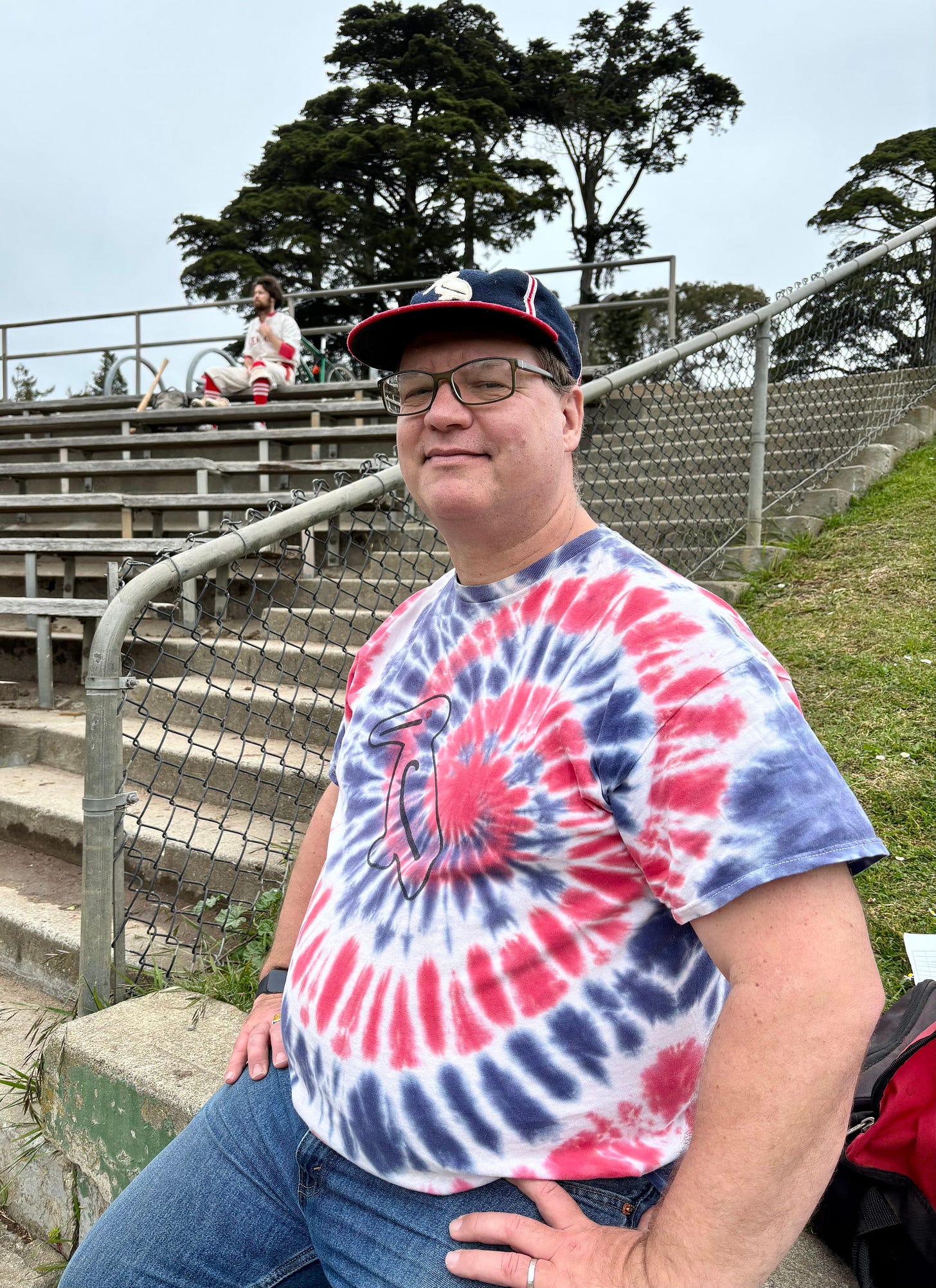
But playing like it’s 1886 also makes for more injuries. “I worry about all of them and they get injured all the time,” said Robin Heagy, who was in the stands, cheering on the Barbary Coasters, her husband Joshua Raynes’s team. He got his nickname, Squint, after getting hit in the eye by a ball while playing first base. “Luckily” she said, “he was fine.”
The League also adheres to bygone customs, etiquette and lingo. The pitcher is a “hurler”; a batter is a “striker”; outs are “hands” and the fans are known as “cranks.” Every member is required to have a nickname, which must be bestowed by someone else. The Barbary Coaster line-up included Rooster, Drillbit, Dirt, Jelly, Rev, Scribbles, Trashcan, Badger, Fresh and Squint.
The umpire, known as the Sir, typically wears a top hat and vestcoat and tie. “He’s the only one allowed to have a flask and a cigar on the field,” said Rowe. While the umpire for the game I watched wasn’t dressed up, he did have a pipe clenched between his lips as he watched the play.
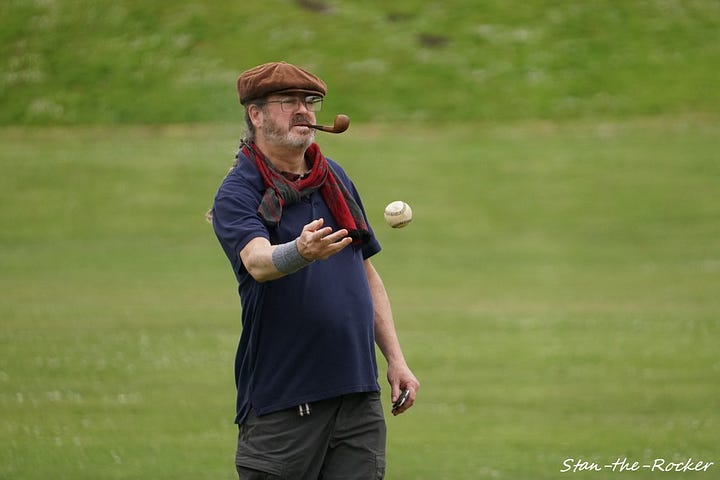

But what gives the games their vintage feel isn’t just the period clothing and rules; it’s the code of conduct which enforces a spirit of sportsmanship all too often absent in sports today. According to the league rules, “Arguing with the Umpire, charging the pitcher, taunting, and fighting are not tolerated…No posing at Home Base, curtain calling, chest bumping, or high fives.”
The rules also bar spitting, gambling and cursing – the last of which was especially offensive to Victorian sensibilities. In 1902, the Park Commission decided to request more police to patrol the park on weekends after receiving a complaint about “the use of profane and obscene language indulged in by the ball players in the park on Sundays and weekdays in the presence of ladies and children.”
The League players are pretty good about spitting and gambling, but not so much the swearing, Forte and Rowe admitted.
“One of the tenets of the league is that everyone is expected to carry themselves like a gentleman,” said Forte. “And my experience is that people who can't live up to that expectation kind of self select out of the league. I've had numerous players say to me that this is one of the most jerk-free adult men's amateur sports leagues you will find.”
“That’s what turned me off of baseball for 15 years,” said Rowe. That is, until he found the vintage league.
By the end of seven innings, the Aces had won, 18-14. No one seemed surprised by the outcome. Though the Coasters don’t have the worst League record, they are known for what one called “their ethos.” (Translation: having a good time during - and especially after the game — is more important to them than winning.) The teams shook hands and waved their caps with three rousing “huzzahs.”
And here’s the Coaster cranks singing the team song:
If you want to take a trip back to 1880s base ball, check the league website for the schedule of games.




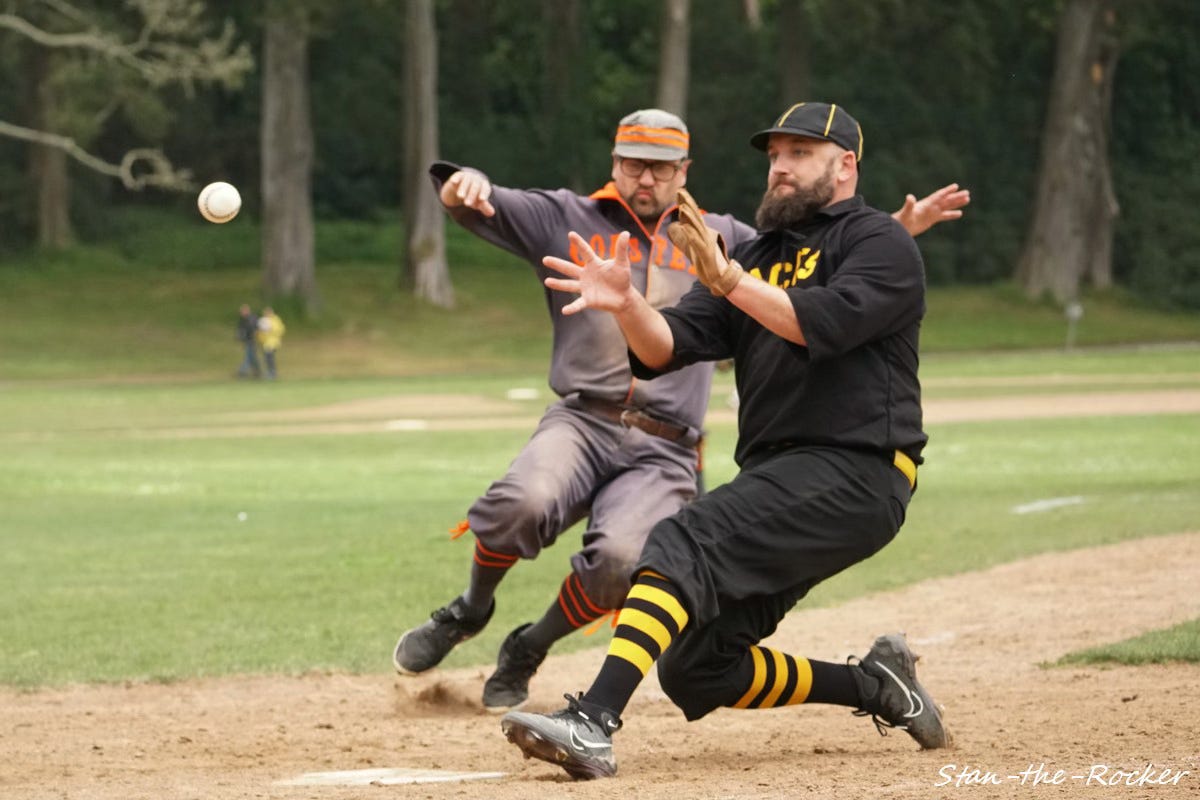

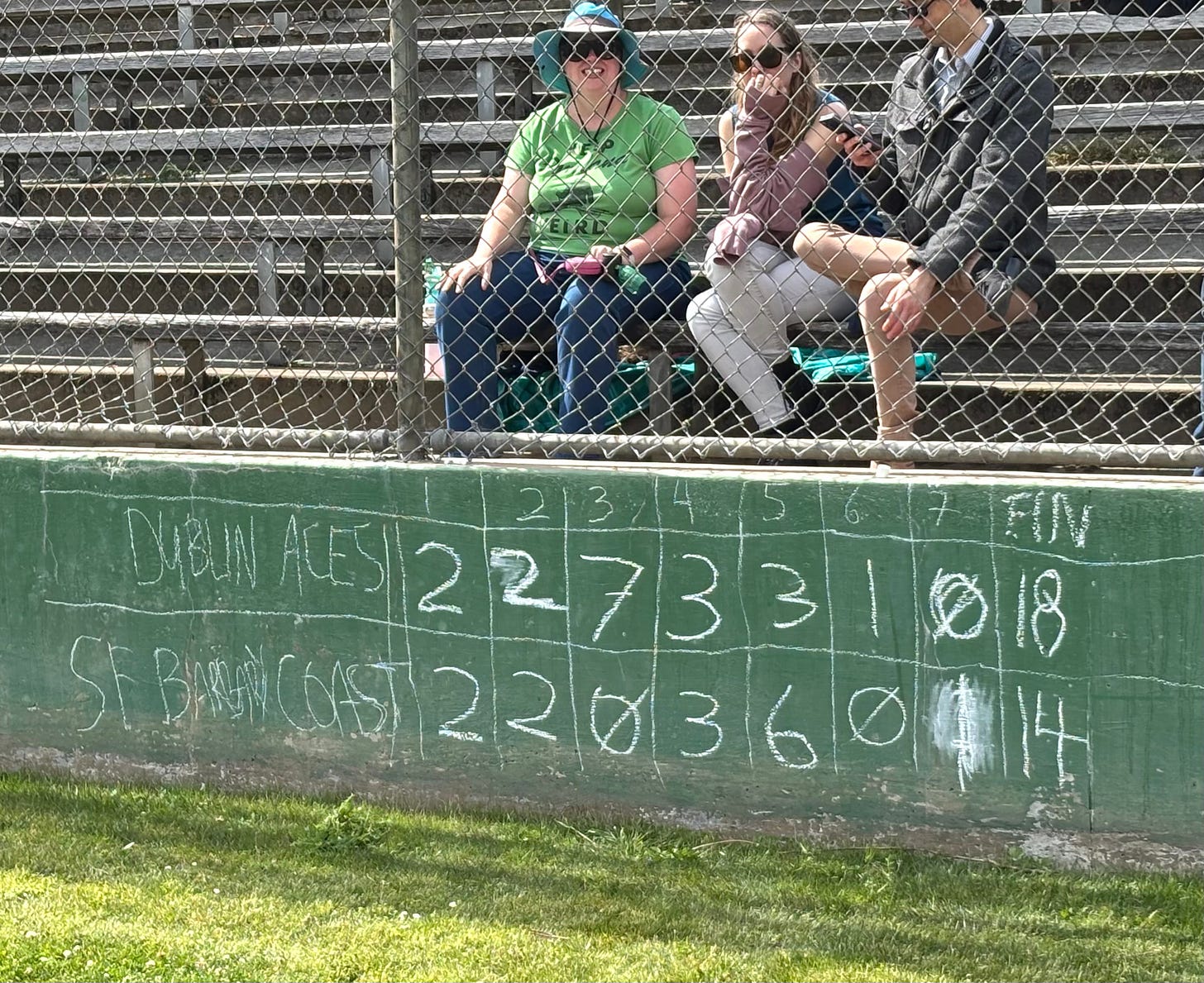
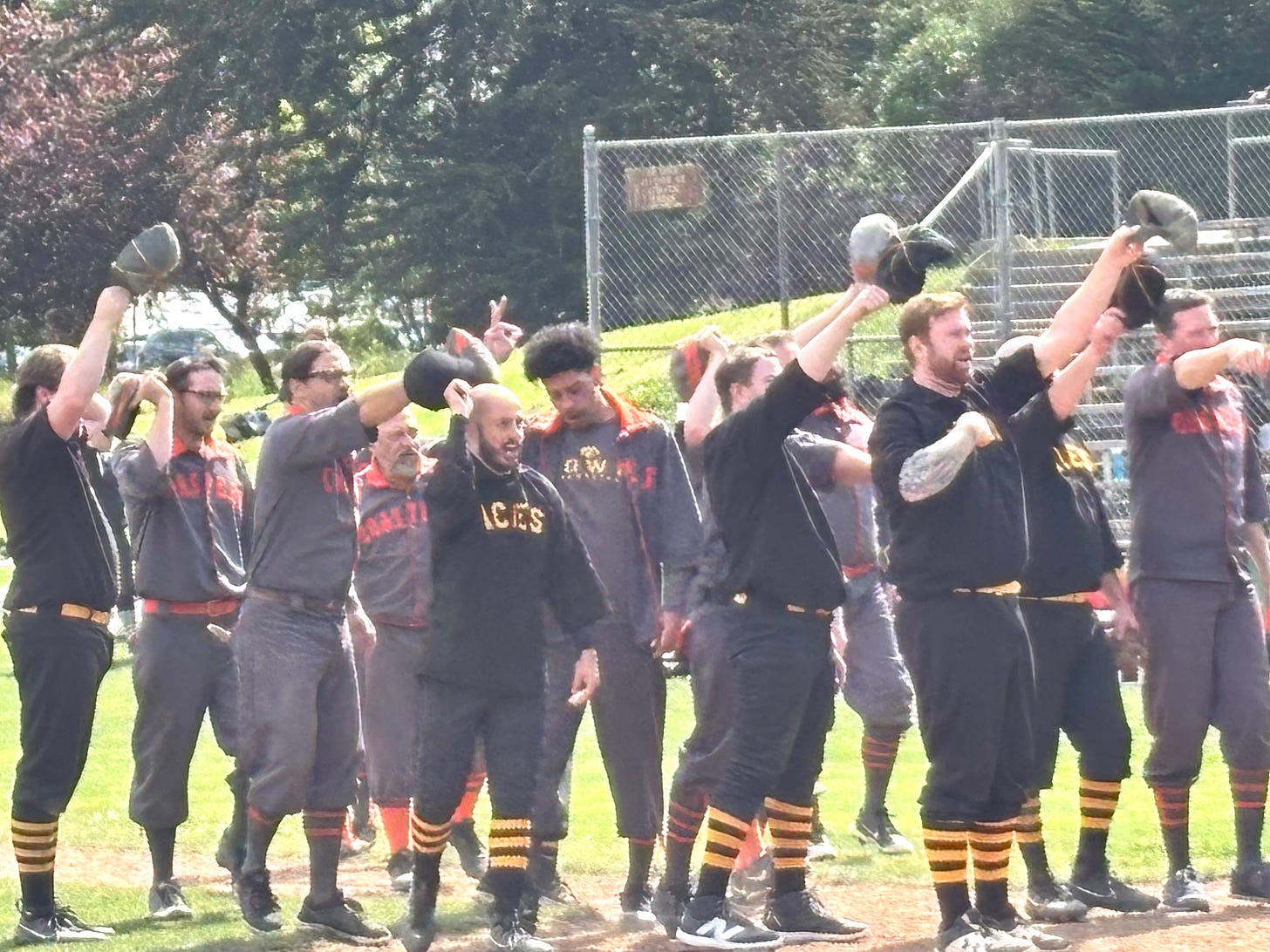
Really enjoyed reading this Susan! I saw this league play a few weeks ago and wanted to know more about them. Thanks!
I think McLaren Park is where most of the local teams now practice. Many are made up of immigrants who recreate local teams from their home countries. I used to watch some of the Nicaraguan teams practice.